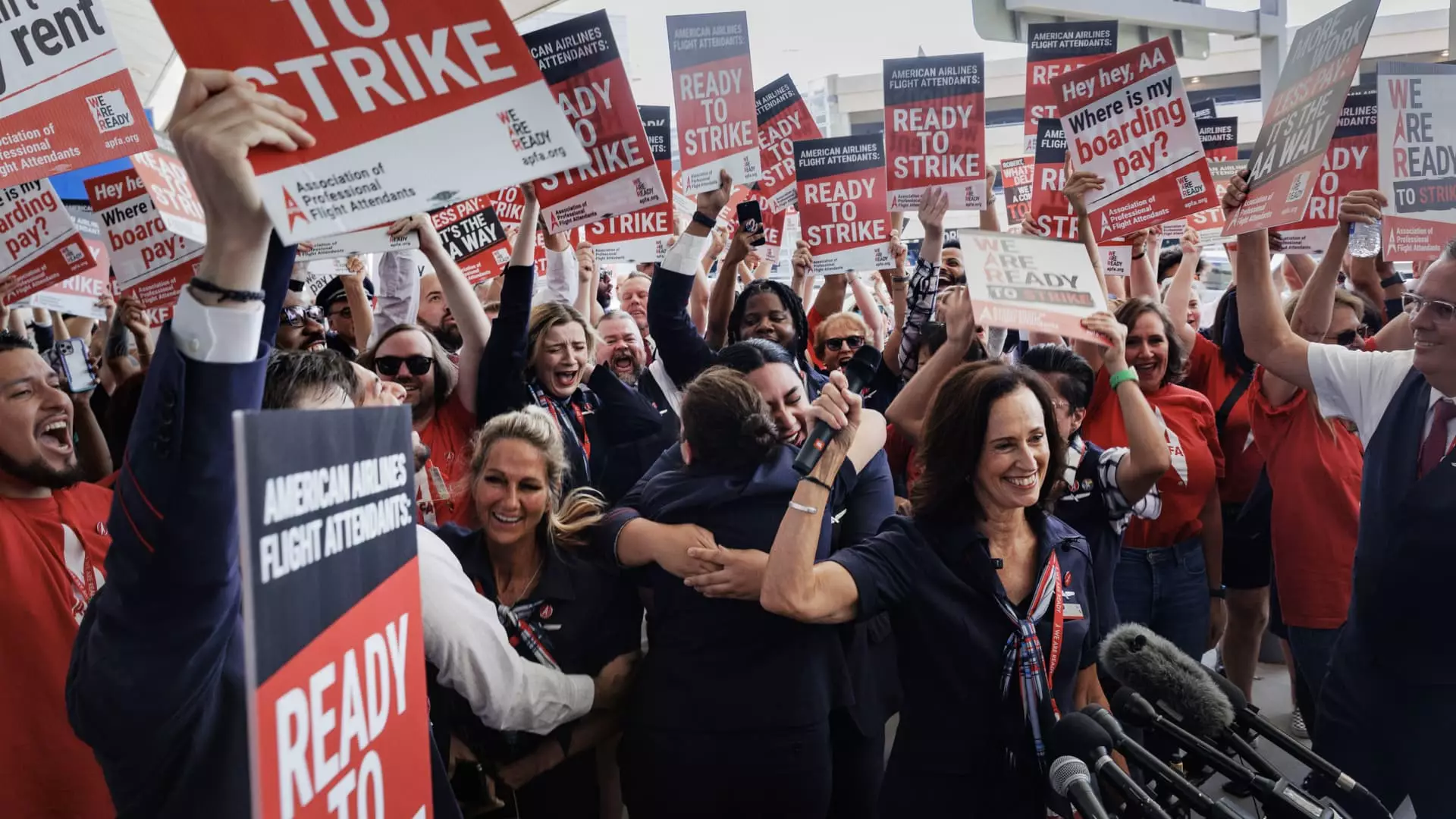In a significant development that marks the close of protracted labor negotiations, American Airlines flight attendants have ratified a five-year contract that promises substantial raises and other benefits. The agreement, reached with overwhelming support—87% of voting flight attendants endorsed it—presents an immediate salary increase of up to 20.5% effective from October. This decisive move aims to address the pressing concerns of cabin crew members who have long awaited progress in their contract discussions.
Importance of the Agreement
Julie Hedrick, the president of the Association of Professional Flight Attendants (APFA), articulated the importance of this contract, stating it serves as a significant milestone for the approximately 28,000 flight attendants represented by the union. The contract not only provides immediate increases in wages but also includes retroactive pay as compensation for the lengthy negotiation process that delayed finalizing the agreement. This deal is expected to alleviate tensions that had been building up within the workforce, particularly as the threat of a strike loomed over the airline.
The successful conclusion of this agreement has been a relief not only for the flight attendants but also for American Airlines management. The airline’s leadership encountered increasing pressure, including a potential strike from the crew if satisfactory terms could not be negotiated. The involvement of high-ranking officials, including Transportation Secretary Pete Buttigieg and Labor Secretary Julie Su, who monitored negotiations alongside the National Mediation Board, underscores the significance of this contract in the broader context of labor relations in the airline sector.
Moreover, the push for better working conditions and pay has been a theme across the airline industry, particularly following the disruptions caused by the COVID-19 pandemic. Similar patterns are visible in other sectors as well, where various labor groups are advocating for improved contracts, showing a collective trend of workers seeking fairness in compensation aligned with the rising cost of living.
While American Airlines flight attendants can now focus on their roles with renewed financial security, other carriers are still navigating their own labor negotiations. For instance, United Airlines and its flight attendants remain engaged in talks, whereas Alaska Airlines’ cabin crew recently rejected a tentative agreement, indicating the fragility of labor peace in the industry. These ongoing discussions highlight the complexities of labor dynamics in a rapidly evolving economic environment.
The broader labor landscape has been charged with activism, with multiple industries—including automotive and Hollywood—successfully negotiating higher wages, often following strike actions. As national attention turns towards labor rights and fair compensation, the actions taken by American Airlines’ flight attendants may inspire other workers facing similar struggles.
Conclusion: Hope for Future Negotiations
The successful ratification of this contract stands as a beacon of hope for flight attendants and workers across various sectors who continue to advocate for equitable treatment in the workplace. As the airline industry grapples with a post-pandemic recovery, the resolution of American Airlines’ contract negotiations could serve as a benchmark for future discussions between labor unions and management. It underscores the necessity for a collaborative approach to address the needs and concerns of essential workers who form the backbone of the airline industry.


Leave a Reply